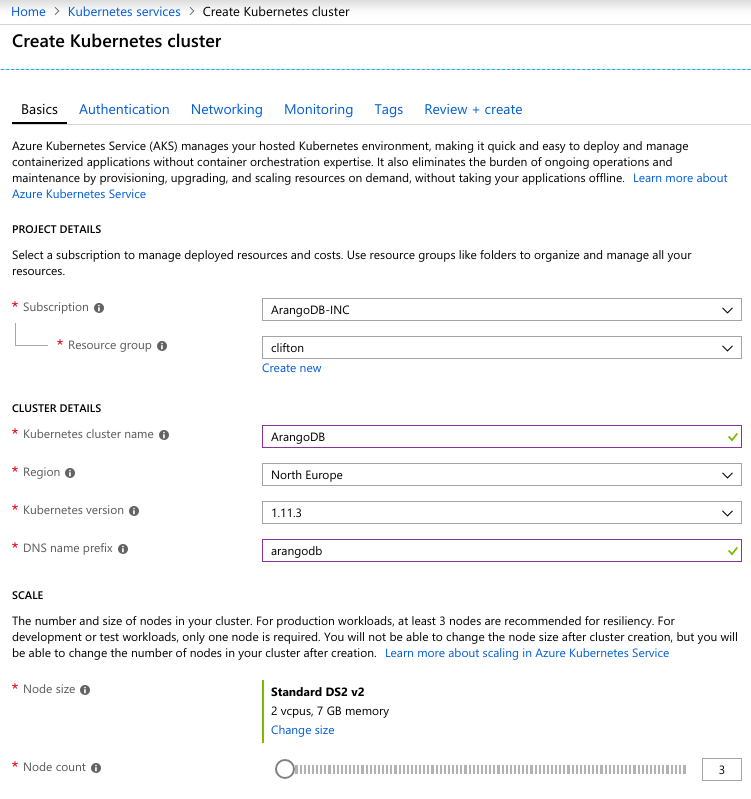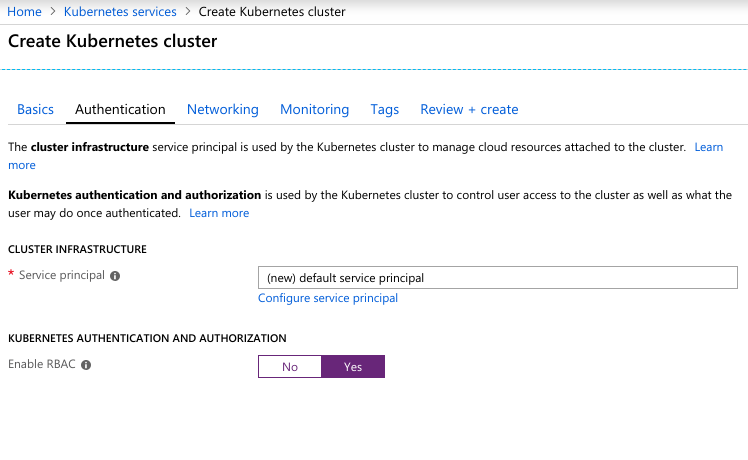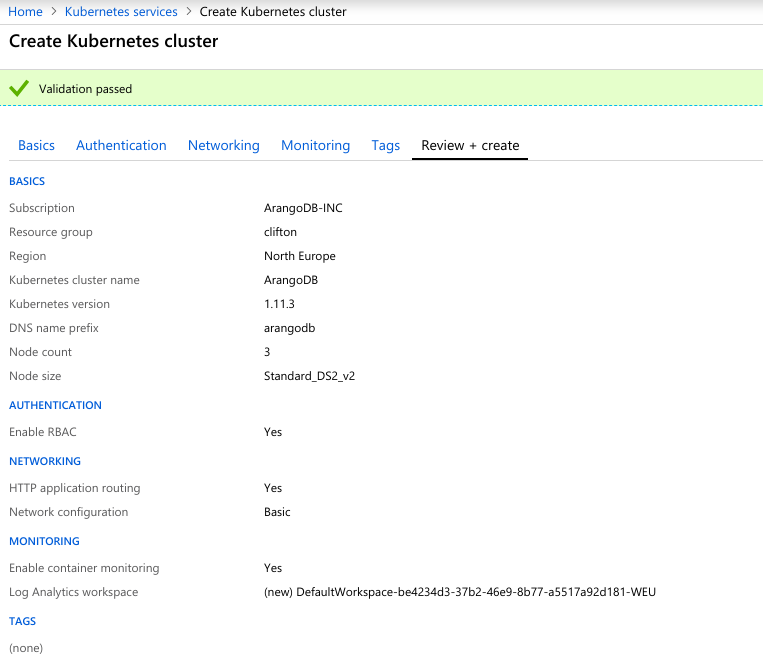ArangoDB v3.4 reached End of Life (EOL) and is no longer supported.
This documentation is outdated. Please see the most recent version here: Latest Docs
Start ArangoDB on Azure Kubernetes Service (AKS)
Requirements
Deploy cluster
- In Azure dashboard choose Create a resource
- Choose Kubernetes Service
Cluster basics (version >=1.10)

Cluster authentication (Enable RBAC)

Wait for cluster to be created

Move to control using kubectl
-
Login to Azure using CLI
$ az login [ { "cloudName": "AzureCloud", "id": "...", "isDefault": true, "name": "ArangoDB-INC", "state": "Enabled", "tenantId": "...", "user": { "name": "xxx@arangodb.com", "type": "user" } } ] -
Get AKS credentials to merge with local config, using resource group and cluster names used for above deployment
$ az aks get-credentials --resource-group clifton --name ArangoDB -
Verify successful merge
$ kubectl get svc NAME TYPE CLUSTER-IP EXTERNAL-IP PORT(S) AGE kubernetes ClusterIP 10.0.0.1 <none> 443/TCP 38m -
Initialize
helm$ kubectl create serviceaccount --namespace kube-system tiller serviceaccount/tiller created$ kubectl create clusterrolebinding tiller-cluster-rule \ --clusterrole=cluster-admin --serviceaccount=kube-system:tiller clusterrolebinding.rbac.authorization.k8s.io/tiller-cluster-rule created$ helm init --service-account tiller $HELM_HOME has been configured at /home/xxx/.helm. ... Happy Helming! Tiller (the Helm server-side component) has been installed into your Kubernetes Cluster. -
Deploy ArangoDB operator
$ helm install \ github.com/arangodb/kube-arangodb/releases/download/X.X.X/kube-arangodb.tgz NAME: orderly-hydra LAST DEPLOYED: Wed Oct 31 15:11:37 2018 NAMESPACE: default STATUS: DEPLOYED ... See https://www.arangodb.com/docs/stable/tutorials-kubernetes.html for how to get started. -
Deploy ArangoDB cluster
$ kubectl apply -f https://raw.githubusercontent.com/arangodb/kube-arangodb/master/examples/simple-cluster.yaml

